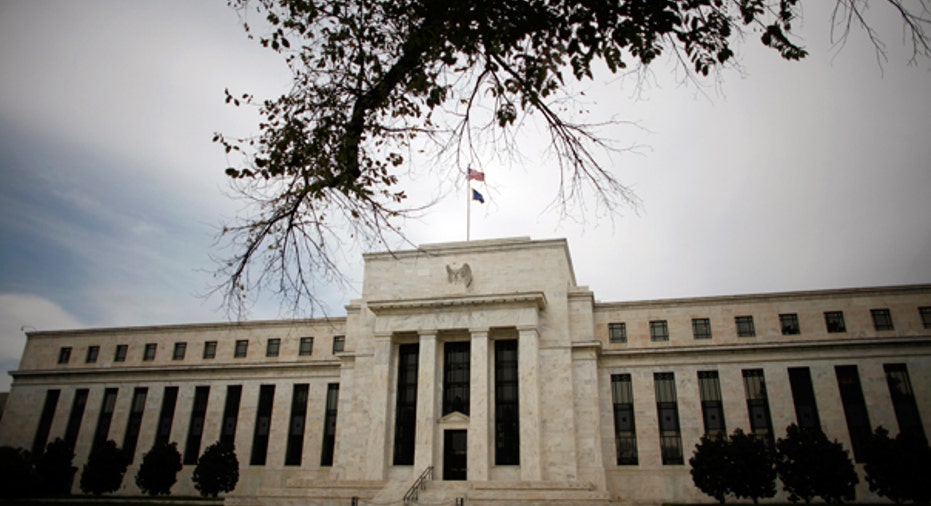Fed Seen Standing Firm on Rates Until June

Federal Reserve policymakers are seen leaving short-term interest rates unchanged at a two-day policy meeting that began Tuesday, but also to signal that a rate hike is not too far off as long as the job market and inflation continue to improve.
The meeting began at 1 p.m. EDT, a Fed spokesperson said in an email. The Fed is due to issue a statement at the conclusion of the meeting on Wednesday at 2 p.m. EDT, and Fed Chair Janet Yellen will hold a news conference at 2:30 p.m.
The U.S. central bank lifted borrowing costs in December for the first time in nearly a decade, but uncertainty over the impact on the U.S. economy of slower growth in China and Europe since the beginning of the year has driven policymakers to hold off on any further rate hikes since then.
A recent string of stronger U.S. data, including faster-than-expected job growth in February, has eased fears in the past few weeks that headwinds from abroad, and the tighter financial conditions they sparked at home, could derail the recovery.
"The most prominent risk in January - the tightening in financial conditions at the start of the year - has receded," wrote Goldman Sachs economists Zach Pandl and Jan Hatzius. "As a result, Chair Yellen will likely indicate that the committee remains on track to raise rates again next quarter."
Still, the path to a next rate hike is unlikely to be smooth. U.S. retail sales were reported on Tuesday to have been weaker than thought in January, renewing worries over domestic growth prospects, even as the Bank of Japan offered a gloomier outlook for the world's third-biggest economy without immediately adding to stimulus.
Fresh forecasts from the Fed's 17 officials released after the meeting ends on Wednesday will likely signal three or possibly two rate hikes this year, a slower path of rate hikes than the four 2016 rate hikes envisioned in December, the last time forecasts were published.
The expected downgrade may largely reflect the Fed's decision in January to put policy on hold for the time being, rather than new worries over the U.S. or global outlook.
Indeed, since the last Fed meeting U.S. inflation has shown signs of stabilizing, with one measure published by the Dallas Fed rising to 1.9 percent, its closest to the Fed's 2 percent goal in 2-1/2 years. Meanwhile, the U.S. unemployment rate held at 4.9 percent in February, near the level many Fed officials believe represents full employment.
The European Central Bank's decision last week to ease policy further may help add to confidence that action has been taken to underpin growth in Europe, helping ensure a stalling of the global growth drag on the U.S.
That could mean another U.S. rate hike by mid-year and, depending on economic data, more to come after that.
"June seems certainly like a possibility" for the Fed's next rate hike, said former MinneapolisFed President Narayana Kocherlakota last week. Kocherlakota's own preference is for the Fedto take out "insurance" against a recession by cutting rates back to near zero.
INFLATION DEBATE
Still, Kocherlakota's former colleagues will likely spend plenty of time discussing the inflation outlook.
More hawkish rate setters worry that if the Fed does not act to preempt inflation, it could end up behind the curve and lose credibility, while the more dovish members believe the economic recovery is still fragile and want to see firm evidence of inflationary pressures.
The Fed will also need to decide how to characterize the "balance of risks" to their baseline outlook, particularly if policymakers want to keep the door open to rate hikes in April or June.
"(L)ook for the committee to say that risks to the outlook for both economic activity and the labor market are 'nearly balanced,' wrote Barclays economists in a note Monday, adding that the language likely would signal a rate hike in June, though possibly earlier.
Traders of futures tied to the Fed's policy rate currently see about even odds of a rate hike in June, with some chance of another rate hike by the end of the year.
(Reporting by Ann Saphir; Editing by Andrea Ricci)